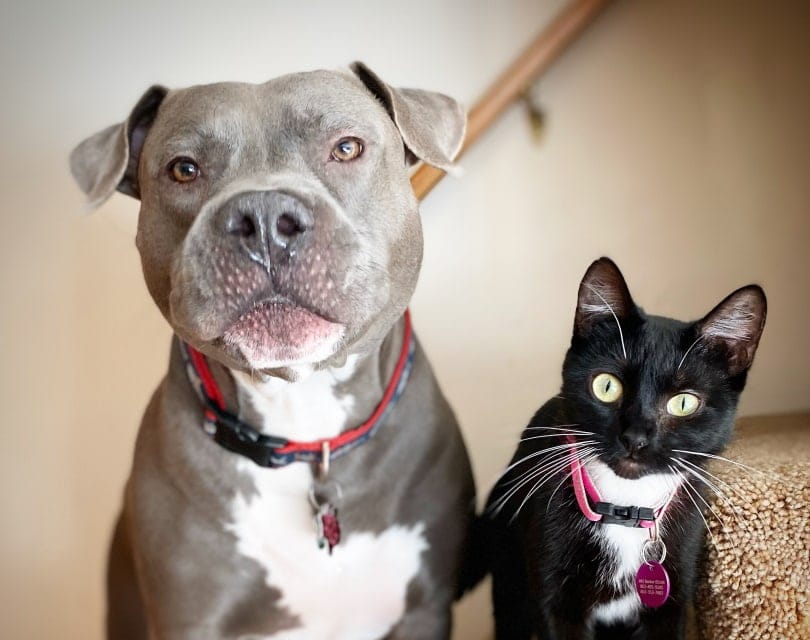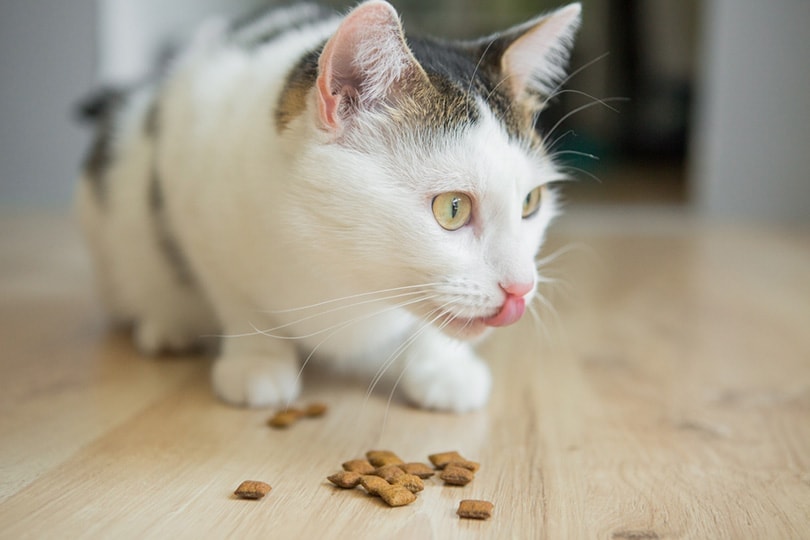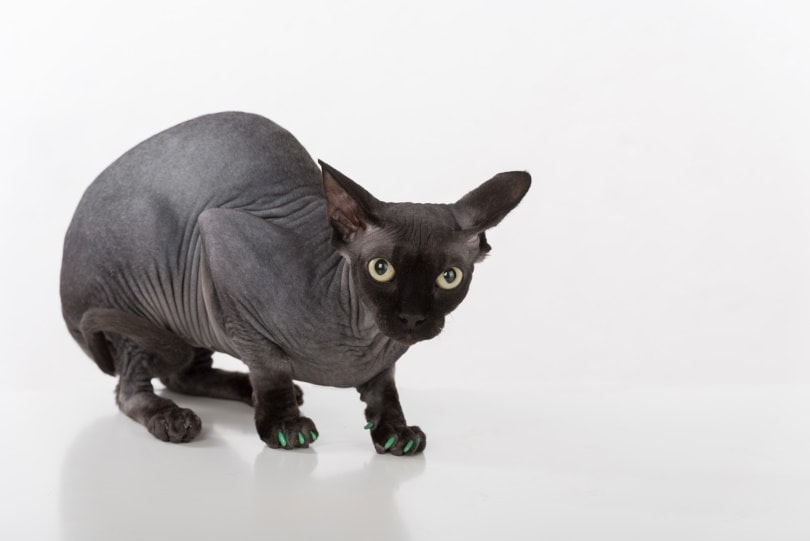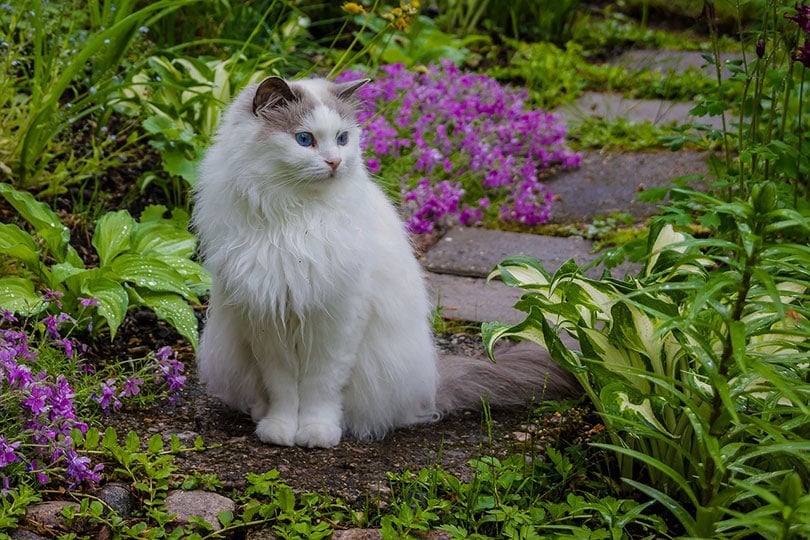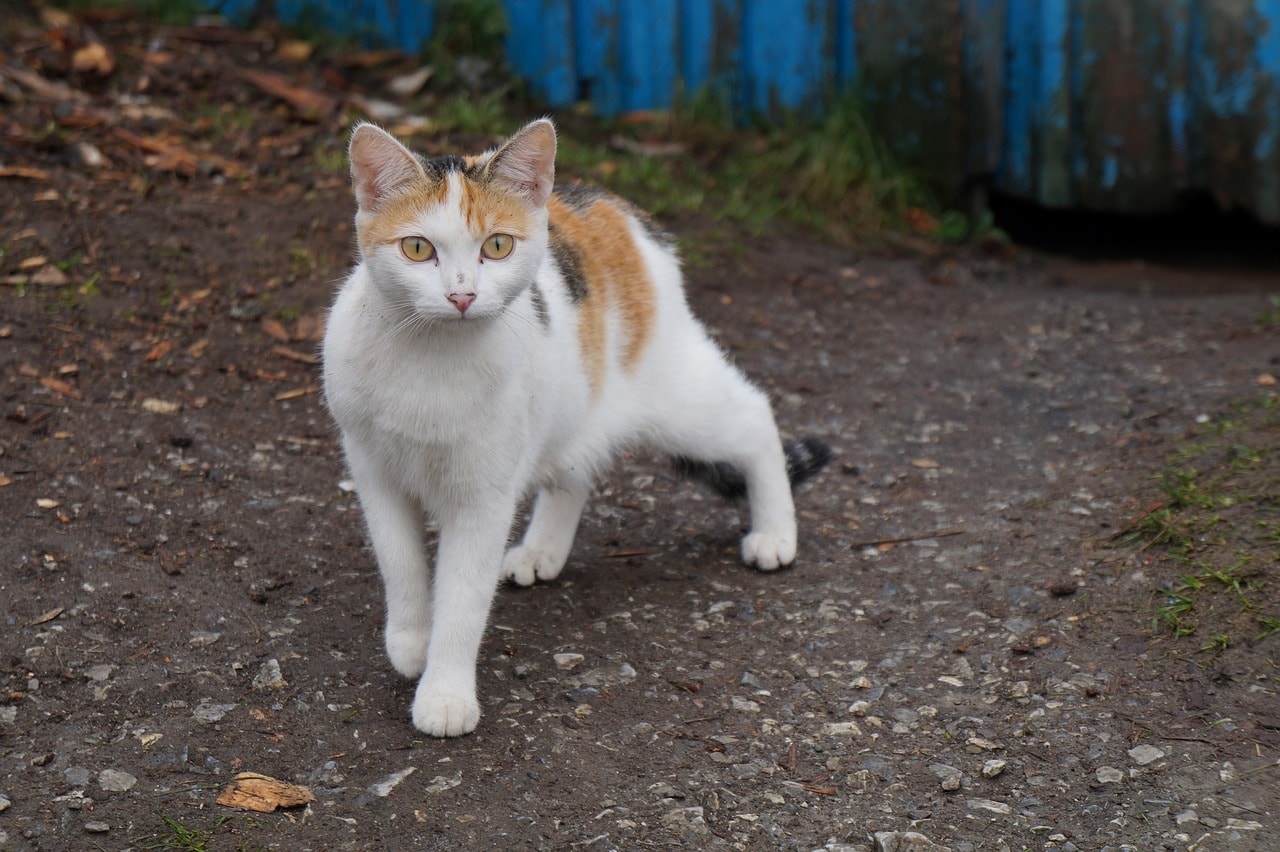If you like having a multiple pet household, you probably considered keeping dogs and cats. While most breeds tend to get along with each other, some cats and dogs have a long-standing reputation as archenemies. But Pitbulls usually get along with cats.
Before introducing either into your home, there should be supervision and proper socialization. But what about the Pitbull?
Historically bred to hunt and kill, this dog breed has a stereotype that’s it’s more likely to be aggressive towards the cat. Because of this, most people find it hard to allow Pit bulls around their feline friends.
Pitbulls can live with cats as long as they are socialized to cats as babies; otherwise, it will be difficult to co-exist. In addition, the dog needs to be introduced to the cat at a slow and steady pace, and with time they’ll live together in the household without issue.
When Does a Pitbull Become Dangerous to Your Cat?
Some dog breeds have been stereotyped as species that can’t co-exist with other animals or pets in the house. However, there are no bad breeds. The following factors have contributed to these assumptions.
Lack of Socialization
The only sure way to ensure that your Pitbull and cats live peacefully is by socializing them at a tender age. With this interaction, they can grow together in harmony without the dog treating the cat as prey.
However, most people make the mistake of introducing the Pitbull to a home with kittens without proper socialization. If the dog has never interacted with cats before, chances are it will attack and probably hurt or kill your cat.
Some owners also fail by not putting in the effort to socialize their pets. For this process to work efficiently, the pet owner needs to be fully involved.
Socialization in puppies should be implemented at around 12 weeks and younger. This period is perfect for the brain to understand which things are okay.
Socialization also applies to other objects and things such as children, strangers, and thunder. If the dog learns all these things as a puppy, they are less likely to be anxious.
Introducing Pitbull Dogs as Adults

In general, Pitbulls have a bad rap even in the media. They are known to attack and hurt other animals and people. Because of this, most dog lovers choose to go for Pit bulls for their size and fierceness. In addition, they also train the dogs to be violent and dangerous.
With this type of prior training, they are already conditioned to hunt and attack other smaller animals and strangers. Therefore, once you introduce the dog to a home with cats, they’ll outrightly attack them.
If you adopt an older Pitbull from a rescue that already has prior issues with socialization and aggression, the chances are that the two pets will not co-exist. The same applies to cats that have not been socialized enough to play with dogs or other cats.
Related Read: 10 Tips To Make Cats And Dogs Get Along
What to Consider Before Introducing Your Pitbull to Your Cat
You need to have complete background information about the two animals before bringing them together.
Here are essential things you should consider.
The Pitbull’s Temperament
Pitbulls have been bred as natural hunters. They are bred for their strength, temperament, and agility. They also love being close to their owners, therefore, are very protective. Because of this, you have to train and give the dog a lot of attention.
They Have High Energy Levels
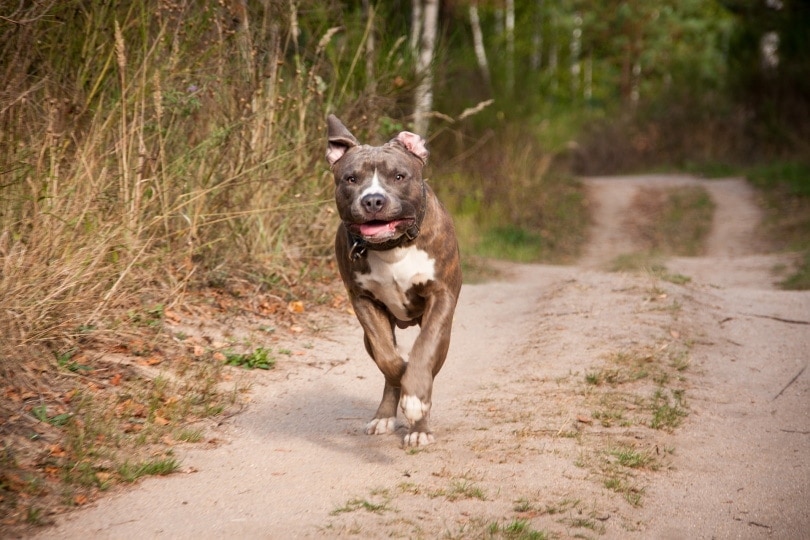
Despite been mid-sized, they have very high energy levels. However, with proper boundaries, they are gentle and can co-exist with cats.
They Need Strict Boundaries
As the pet owner, you’ll need to be consistent when enforcing strict boundaries with the Pitbull. The advantage is that they love pleasing their owners and will cooperate according to the set boundaries.
How to Introduce Your Pitbull to Your Cat
If you want your Pitbull to co-exist peacefully with the feline friends in your home, you’ll need to take these steps.
Start the Socialization Process Immediately

Whether you are getting your Pitbull from a breeder or a rescue, you should adopt the dog at around the age of 8 weeks. During this period, they are still young, and their brain is developing to understand things. The socialization process should start as soon as you arrive home.
You can choose an area in your home where you can separate the two animals but close enough so that they can sniff each other out. This tactic helps with exposure but in a controlled environment. The two will see each other every day and get used to each other’s scents and smell, making them comfortable.
As they continue adapting to having each other around, the Pitbull will not view the cat as prey. Observe their interactions in a controlled space which lays the foundation for their future co-existence. The more comfortable they are around each other, the less stress you’ll have as their owner.
The secret to your Pitbull getting along with your cats is starting early as soon as you bring the pets home.
Have the Pitbull and Cat Interactions Supervised
To avoid any problems early on, ensure that the socialization process is supervised every time. The two animals should be kept in separate spaces but where they can see each other. They might not get along right away, hence the need for supervision.
If your Pitbull and cat have never met before, don’t leave them at home alone. This might give room for attacks. Therefore, to prevent any injuries or fatalities, you’ll need to give the two animals all the attention until you are completely confident that they can co-exist without supervision or attacking one another.
Keep Training and Offering Reinforcements to Your Pitbull

Pitbulls are very intelligent animals, therefore take up training quickly. Since they like pleasing their owners, they are likely to do things that make you happy. To keep reinforcing good behaviors, especially with regards to interaction with the cat, offer your dog rewards to keep up the good habits.
The same applies to the cat. Once these animals understand what earns them treats, they’ll interact and co-exist much better. A Pitbull picks up these kinds of information quickly; therefore, they’ll strive to be friendly around the family cat if you reward them.
Set Boundaries for Each Animal
As family pets, both the Pitbull and cat will want to be close to you. They are codependent and love human interaction sometimes. Even though they become friends, they’ll still need some space away from each other and individual time to spend with you.
By setting up boundaries for them, you’ll reduce conflicts and aggression that might arise if one of them feels neglected. Since they are completely different species, they might not want to spend all the time together and have varying needs on how they spend their time. This is why space is essential.
Have a Socialization Plan for Each New Pet

Just because your Pitbull is getting along with your cat, it doesn’t mean it will be friendly with a new pet you bring in the future. The socialization is different and might not always transfer to the latest addition to the family.
Therefore, if you bring in a new pet, for instance, a kitten, you have to supervise the socialization for a few weeks until you are comfortable the dog will not attack it. The same applies when you have visiting friends who have pets.
You might also be interested in: Do Chihuahuas Get Along With Cats? What You Need to Know!
What Are Red Flags to Look Out for In Your Pitbull?
Pit bulls and cats should be introduced with a lot of caution, especially if they have not been socialized before.
Here are some red flags you should have an eye for.
Your Pitbull Acts Threatened
Having separate spaces is very important for your cat and dog. If your dog feels threatened at any point, its first instinct will be to attack the cat. Whether it’s food, space, or time with the owner, ensure that they both get their own allocation.
For instance, if the dog decides to fight your cat over food, it could hurt them pretty bad or even kill them. Therefore, once you notice this kind of behavior, it’s time to separate your pets until things cool off.
You Got the Dog from a Rescue

Getting a dog from a rescue is an alternative and an excellent way to adopt a pet. However, most rescued dogs are not socialized as puppies which presents a problem when introducing your cat.
The dogs from the rescue might have already been trained to be aggressive towards other small animals. If they bring this baggage to your home, it becomes hard to socialize them with your cat. Therefore, if you feel that the Pitbull has extreme aggression issues, it might be better to get a young puppy from the breeder.
As a precaution, you should get complete information about the background of the Pitbull from the rescue staff before you proceed with the adoption process.
Your Pitbull is Rough During Playtime
Does your Pitbull play rough than usual? This might be a sign that they have aggression issues which might go overboard one day. Because the dog is much stronger, it could easily hurt or kill the cat during playtime.
Therefore, you should observe how your canine friend behaves before allowing them to interact with other smaller pets for safety purposes.
Their Prey Drive is High

Some breeds have a high prey drive, especially those historically bred to hunt smaller animals. Before you bring your dog around your cat, you can test how they react around smaller species such as squirrels. If they are comfortable, their prey drive might be low.
Also, if your dog likes to chase things, it’s most likely to pursue a cat too. Since the dog is heavier, it could easily injure your feline friend.
However, this is not a foolproof test because the socialization with each animal is different. Even though the Pitbull appears friendly, you’ll still need to monitor them carefully once you introduce them to your multiple-pet household.
What Steps to Take When Your Pitbull Hurts or Kills Your Cat
Even with training, some dogs might still be stuck in their aggressive path. In extreme cases, the dog might hurt or kill your cat. What should you do if this happens?
Let’s look at some tips.
Go to the Vet
Once the dog bites the cat, you’ll need to go to the vet, especially if the dog had not been vaccinated against rabies. A veterinary will evaluate both pets and treat the cat for injuries.
If you are dealing with a stray cat, ensure you wear gloves when handling it. For safety purposes, your dog may also need to be vaccinated for rabies and quarantined.
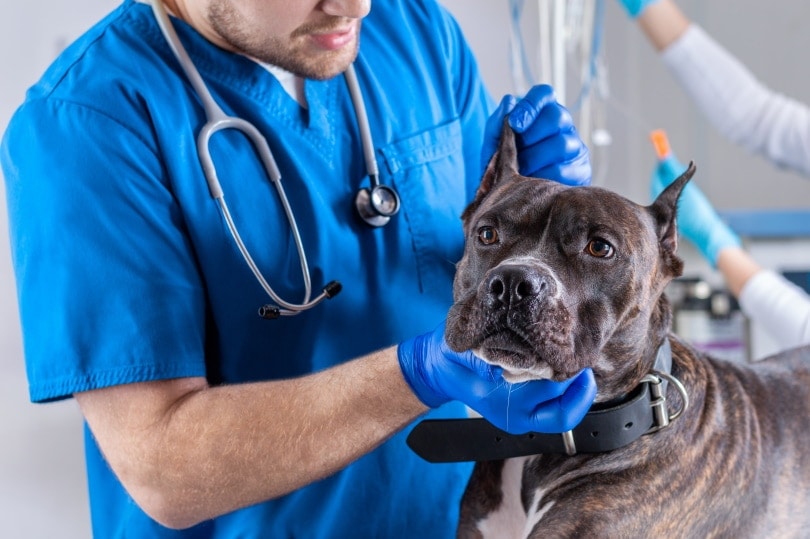
Keep Your Family Safe
Once the dog goes rogue on other pets in your home, it becomes risky, especially if you have small children. You might need to keep the dog away from your kids until the dog gets adequately socialized again and vaccinated. In addition, you’ll also need to get your entire family vaccinated against rabies.
Consult a Veterinary Behaviorist
A veterinary behaviorist or primary care veterinarian can advise on the next steps to take with your Pitbull to avoid the repeat of such behavior. They can also assist with training and socializing your pet to make it safer for your family and other animals.
Contact Adoption Agencies
If the dog becomes too dangerous to stay with the family, the last resort can be putting it up for adoption. An adoption agency or local animal care can take the Pitbull off your hands without problems. Having an erratic dog in your home is dangerous, especially for small children.
See Also: 11 Dog Breeds that Get Along with Cats
Summary
Pitbulls are a popular pet among dog lovers. Despite their aggressive nature, they can comfortably adapt to living with a cat as long as the socialization is done early enough. With proper training, this dog breed is friendly and sociable and follows orders because it’s intelligent.
Before bringing either a Pitbull or cat to your household, ensure you know their background. If they have not been socialized, you need to start the process immediately you bring either home. Once they become comfortable around each other, you can manage them more easily.
If you notice potential red flags of aggression from the dog, you need to be more observant and separate it from other pets. Once the aggression goes overboard and the cat gets hurt, it’s time to consult a veterinary behaviorist or trainer for advice on how to manage your dog better.
Featured Image Credit: Krislyn Capriola, Shutterstock

